Themed collection PCCP Perspectives

Multimodal electrochemistry coupled microcalorimetric and X-ray probing of the capacity fade mechanisms of Nickel rich NMC – progress and outlook
Combining calorimetry with hard and soft X-ray characterization elucidates bulk and surface phenomena responsible for capacity fade in LiNi0.8Mn0.1Co0.1O2 cathodes.
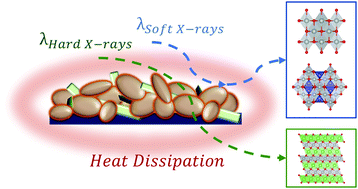
Phys. Chem. Chem. Phys., 2022,24, 11471-11485
https://doi.org/10.1039/D1CP05254C
Recent trends in covalent functionalization of 2D materials
Covalent functionalization of the surface is crucial in 2D materials because of their atomic thinness, large surface-to-volume ratio, and uniform surface chemical potential.

Phys. Chem. Chem. Phys., 2022,24, 10684-10711
https://doi.org/10.1039/D1CP04831G
Understanding the interactions between lithium polysulfides and anchoring materials in advanced lithium–sulfur batteries using density functional theory
Computational studies based on density functional theory calculations for investigating the interactions between lithium polysulfides and anchoring materials in advanced lithium–sulfur batteries.

Phys. Chem. Chem. Phys., 2022,24, 8604-8623
https://doi.org/10.1039/D1CP05715D
Significance of density functional theory (DFT) calculations for electrocatalysis of N2 and CO2 reduction reactions
Density functional theory calculations have shown great significance in improving the catalytic performance and design of CO2RR and NRR electrocatalysts in recent years.
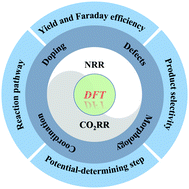
Phys. Chem. Chem. Phys., 2022,24, 8591-8603
https://doi.org/10.1039/D1CP05442B
Zooming in on the initial steps of catalytic NO reduction using metal clusters
The study of reactions relevant to heterogeneous catalysis on metal clusters with full control over the number of constituent atoms and elemental composition can lead to a detailed insight into the interactions governing catalytic functionality.
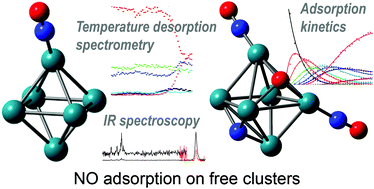
Phys. Chem. Chem. Phys., 2022,24, 7595-7610
https://doi.org/10.1039/D1CP05760J
Equilibrium distribution functions: connection with microscopic dynamics
For a system at equilibrium the phase space density is time invariant. We determine what distribution, if any, is preserved by various dynamics.
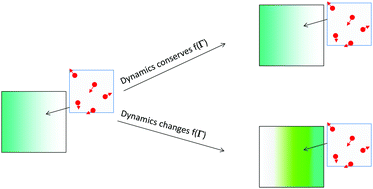
Phys. Chem. Chem. Phys., 2022,24, 6383-6392
https://doi.org/10.1039/D1CP05316G
Electromagnetic bioeffects: a multiscale molecular simulation perspective
We summarise methodologies, challenges and opportunities for theoretical modelling to advance current understanding of electromagnetic bioeffects for biomedicine and industry.
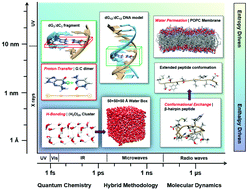
Phys. Chem. Chem. Phys., 2022,24, 6327-6348
https://doi.org/10.1039/D1CP05510K
There is still plenty of room for layer-by-layer assembly for constructing nanoarchitectonics-based materials and devices
While the layer-by-layer (LbL) assembly method has already reached a certain maturity, there is still plenty of room for expanding its usefulness for the fabrication of nanoarchitectonics-based materials and devices.
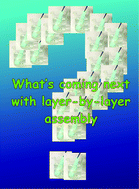
Phys. Chem. Chem. Phys., 2022,24, 4097-4115
https://doi.org/10.1039/D1CP04669A
A novel energy level detector for molecular semiconductors
Principle of energy level detection by HET. The energy of hot carriers can be controlled by the voltage VEB. When the energy surpass the barrier between base and collector (φ), hot carriers inject into the energy levels, respectively.
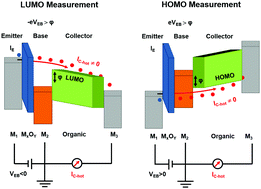
Phys. Chem. Chem. Phys., 2022,24, 2717-2728
https://doi.org/10.1039/D1CP01842F
Multi-resolution simulation of DNA transport through large synthetic nanostructures
A new combination of coarse-grained modeling and finite element calculations enable rapid and accurate characterization of DNA transport through nanostructures of diverse geometries.
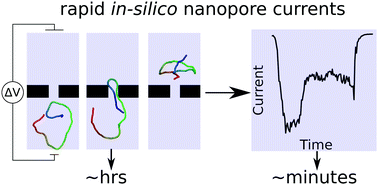
Phys. Chem. Chem. Phys., 2022,24, 2706-2716
https://doi.org/10.1039/D1CP04589J
Palladium clusters, free and supported on surfaces, and their applications in hydrogen storage
Palladium clusters enhance the hydrogen storage of nanoporous carbons.
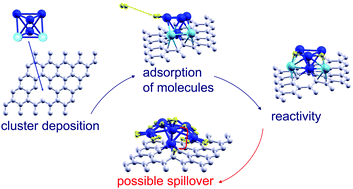
Phys. Chem. Chem. Phys., 2022,24, 2729-2751
https://doi.org/10.1039/D1CP03524J
Progress towards machine learning reaction rate constants
Current status and outlook on the use and development of machine learning algorithms to predict reaction rate constants.
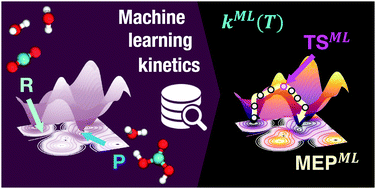
Phys. Chem. Chem. Phys., 2022,24, 2692-2705
https://doi.org/10.1039/D1CP04422B
Photoelectron spectroscopy in molecular physical chemistry
Photoelectron spectroscopy has evolved into a powerful tool for physical chemistry and molecular physics. Some recent examples are highlighted in this perspective.
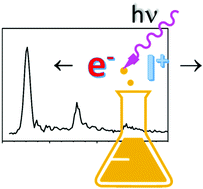
Phys. Chem. Chem. Phys., 2022,24, 1944-1959
https://doi.org/10.1039/D1CP04984D
Using atomic charges to model molecular polarization
We review different models for introducing electric polarization in force fields, with special focus on methods where polarization is modelled at the atomic charge level.
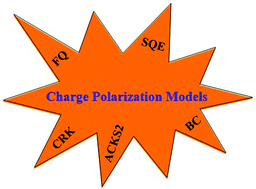
Phys. Chem. Chem. Phys., 2022,24, 1926-1943
https://doi.org/10.1039/D1CP03542H
Physical and chemical aspects at the interface and in the bulk of CuInSe2-based thin-film photovoltaics
Technical issues which remain in CuInSe2-based solar cells are reviewed. A study of single-crystalline Cu(In,Ga)Se2 film devices, carrier recombination analysis, and effects of alkali-metal doping and silver-alloying are particularly focused on.
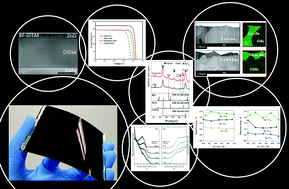
Phys. Chem. Chem. Phys., 2022,24, 1262-1285
https://doi.org/10.1039/D1CP04495H
Enhanced sampling without borders: on global biasing functions and how to reweight them
Global enhanced sampling techniques bias the potential energy surface of biomolecules to overcome high energy barriers. Thereby, they aim to capture extensive conformational ensembles at comparably low computational cost.

Phys. Chem. Chem. Phys., 2022,24, 1225-1236
https://doi.org/10.1039/D1CP04809K
Surface modeling of photocatalytic materials for water splitting
A general understanding of the methods for the surface modeling of photocatalytic materials in recent years.

Phys. Chem. Chem. Phys., 2022,24, 1237-1261
https://doi.org/10.1039/D1CP04352H
Computer-aided design of molecular machines: techniques, paradigms and difficulties
Currently, exploring the operation of a molecular machine and optimizing its performance through computational simulations seems possible, while the de novo design of an original nanoarchitecture to achieve a particular task is still very challenging.
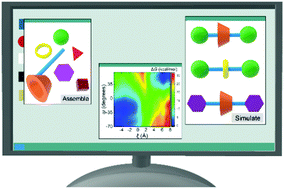
Phys. Chem. Chem. Phys., 2022,24, 1286-1299
https://doi.org/10.1039/D1CP04942A
Spectroscopic analysis focusing on ionic liquid/metal electrode and organic semiconductor interfaces in an electrochemical environment
Attenuated total reflectance ultraviolet spectroscopy can facilitate access to ionic liquid/solid substrate interfaces in an electrochemical environment.
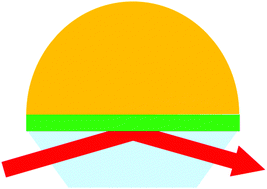
Phys. Chem. Chem. Phys., 2022,24, 615-623
https://doi.org/10.1039/D1CP04094D
Mechanical behaviour of inorganic solid-state batteries: can we model the ionic mobility in the electrolyte with Nernst–Einstein's relation?
The fundamental physics of Nernst–Einstein's relation assumes that the electric force is in equilibrium with the viscous force, which is not necessarily compatible with the mechanical properties of a brittle inorganic solid electrolyte.
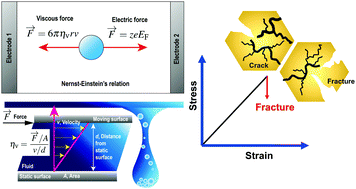
Phys. Chem. Chem. Phys., 2021,23, 27159-27170
https://doi.org/10.1039/D1CP00909E
The determination of the HOR/HER reaction mechanism from experimental kinetic data
A correct kinetic analysis of HOR/HER requires steady-state polarization curves and also account for the impact of H coverage and mass transport.
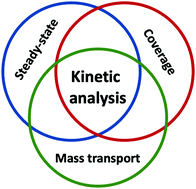
Phys. Chem. Chem. Phys., 2021,23, 27150-27158
https://doi.org/10.1039/D1CP04134G
Mechanistic photophysics and photochemistry of unnatural bases and sunscreen molecules: insights from electronic structure calculations
The photophysical and photochemical mechanisms of unnatural bases and sunscreen molecules predicted by electronic structure calculations.
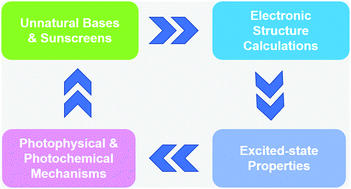
Phys. Chem. Chem. Phys., 2021,23, 27124-27149
https://doi.org/10.1039/D1CP03994F
Polarized Raman spectroscopy in low-symmetry 2D materials: angle-resolved experiments and complex number tensor elements
Schematic of the experimental set-up to collect the angle-resolved polarized Raman spectra unveiling the optically anisotropic properties in 2D materials.
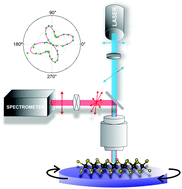
Phys. Chem. Chem. Phys., 2021,23, 27103-27123
https://doi.org/10.1039/D1CP03626B
Morphological design strategies to tailor out-of-plane charge transport in conjugated polymer systems for device applications
The transport of charge carriers throughout an active conjugated polymer (CP) host, characterized by a heterogeneous morphology of locally varying degrees of order and disorder, profoundly influences the performance of CP-based electronic devices.
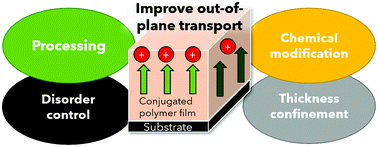
Phys. Chem. Chem. Phys., 2021,23, 27076-27102
https://doi.org/10.1039/D1CP02476K
Computational elucidations on the role of vibrations in energy transfer processes of photosynthetic complexes
This perspective provides accounts on recent studies regarding the role of vibrations toward energy transfers in photosynthetic complexes. The latest developments in simulation techniques are also reviewed with an outlook to future directions.
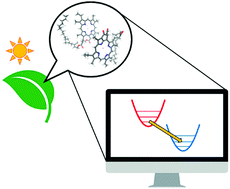
Phys. Chem. Chem. Phys., 2021,23, 26623-26639
https://doi.org/10.1039/D1CP04615B
Rotational action spectroscopy of trapped molecular ions
Rotational action spectroscopy is an experimental method in which rotational spectra of molecules, typically in the microwave to sub-mm-wave domain of the electromagnetic spectrum (∼1–1000 GHz), are recorded by action spectroscopy.
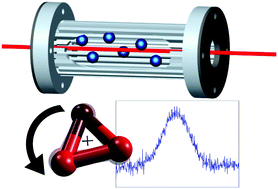
Phys. Chem. Chem. Phys., 2021,23, 26602-26622
https://doi.org/10.1039/D1CP03975J
An overview from simple host–guest systems to progressively complex supramolecular assemblies
This perspective article presents an overall summary from simple host–guest complexation to advanced supramolecular assemblies.
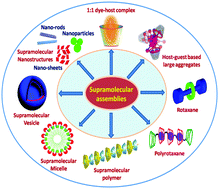
Phys. Chem. Chem. Phys., 2021,23, 26085-26107
https://doi.org/10.1039/D1CP03556H
Vibrational predissociation versus intramolecular vibrational energy redistribution (IVR) in rare gas⋯dihalogen complexes: IVR identified in Ar⋯I2(B, ν′) using velocity-map imaging
Contributions from competing relaxation pathways can be difficult to identify, but direct evidence for IVR in the dissociation of excited-state Ar···I2(B, v') complexes was obtained using ion product velocity map imaging.
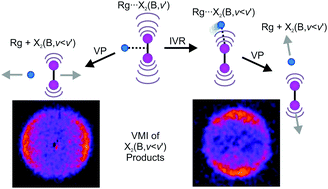
Phys. Chem. Chem. Phys., 2021,23, 26108-26119
https://doi.org/10.1039/D1CP04727B
Rechargeable aqueous zinc–bromine batteries: an overview and future perspectives
We review the past and present investigations on ZBBs, discuss the key problems and technical challenges, and propose perspectives for the future, with the focus on materials and chemistry.
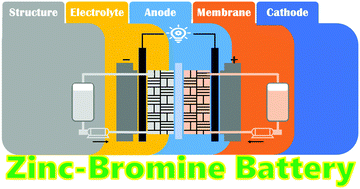
Phys. Chem. Chem. Phys., 2021,23, 26070-26084
https://doi.org/10.1039/D1CP03987C
On the fate of high-resolution electron energy loss spectroscopy (HREELS), a versatile probe to detect surface excitations: will the Phoenix rise again?
High-resolution electron energy loss spectroscopy is a powerful tool to investigate surface excitations (vibrations of chemisorbed atoms and molecules, phonons, plasmons). Here, a perspective on the status and the future perspectives of HREELS is presented.
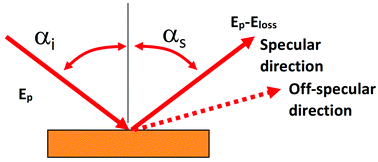
Phys. Chem. Chem. Phys., 2021,23, 26061-26069
https://doi.org/10.1039/D1CP03804D
Phonon transport in graphene based materials
Graphene, due to its atomic layer structure, has the highest room temperature thermal conductivity k for all known materials and many excellent thermal properties.
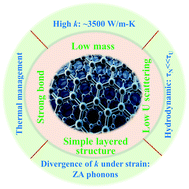
Phys. Chem. Chem. Phys., 2021,23, 26030-26060
https://doi.org/10.1039/D1CP02328D
Laser spectroscopy of helium solvated molecules: probing the inertial response
Superfluid helium nanodroplets provide a unique environment for investigating the coupling of solvent to the rotation of embedded molecules.
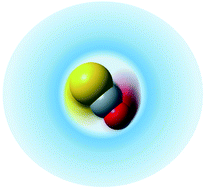
Phys. Chem. Chem. Phys., 2021,23, 25467-25479
https://doi.org/10.1039/D1CP04368D
Unravelling the role of charge transfer state during ultrafast intersystem crossing in compact organic chromophores
The role of the intermolecular charge transfer state during ultrafast intersystem crossing in compact chromophores is revealed by spectroscopy and theoretical investigations.

Phys. Chem. Chem. Phys., 2021,23, 25455-25466
https://doi.org/10.1039/D1CP02912F
Electropumping of nanofluidic water by linear and angular momentum coupling: theoretical foundations and molecular dynamics simulations
Water confined by asymmetric hydrophobic/hydrophilic walls (left) and symmetric hydrophilic walls (right), and associated streaming velocity profiles in the steady-state after application of a rotating electric field.

Phys. Chem. Chem. Phys., 2021,23, 25003-25018
https://doi.org/10.1039/D1CP04139H
The electron-transfer intermediates of the oxygen evolution reaction (OER) as polarons by in situ spectroscopy
The conversion of diffusive forms of energy (electrical and light) into short, compact chemical bonds by catalytic reactions regularly involves moving a carrier from an environment that favors delocalization to one that favors localization.
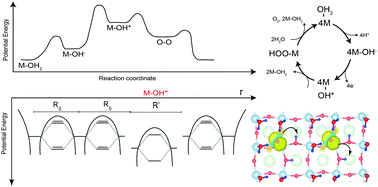
Phys. Chem. Chem. Phys., 2021,23, 24984-25002
https://doi.org/10.1039/D1CP01760H
High-fidelity first principles nonadiabaticity: diabatization, analytic representation of global diabatic potential energy matrices, and quantum dynamics
This Perspective discusses recent advances in constructing high fidelity diabatic potential energy matrices for nonadiabatic systems and the associated quantum dynamics.
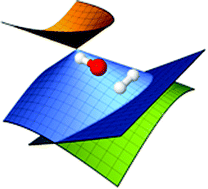
Phys. Chem. Chem. Phys., 2021,23, 24962-24983
https://doi.org/10.1039/D1CP03008F
Strategies used by nature to fix the red, purple and blue colours in plants: a physical chemistry approach
Simple anthocyanins by themselves are unable to give significant colours in plants. In this work, the strategies used by nature to fix the flavylium cation and quinoidal base colours are investigated from the point of view of their physical chemistry.
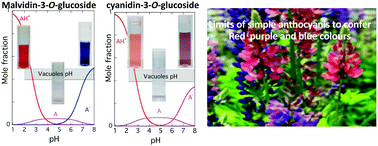
Phys. Chem. Chem. Phys., 2021,23, 24080-24101
https://doi.org/10.1039/D1CP03034E
The rise of X-ray spectroscopies for unveiling the functional mechanisms in batteries
Synchrotron-based X-ray spectroscopies have been key tools in the discovery, understanding, and development of battery materials. In this Perspective review, their state-of-the-art is highlighted, with special emphasis on future trends and needs.
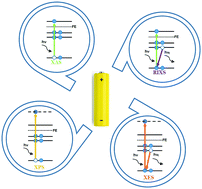
Phys. Chem. Chem. Phys., 2021,23, 23445-23465
https://doi.org/10.1039/D1CP03263A
Studying 2D materials with advanced Raman spectroscopy: CARS, SRS and TERS
Perspectives on advancing our understanding of two-dimensional materials using coherent anti-Stokes (CARS), stimulated (SRS) and tip-enhanced (TERS) Raman spectroscopy techniques.
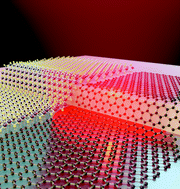
Phys. Chem. Chem. Phys., 2021,23, 23428-23444
https://doi.org/10.1039/D1CP03240B
Challenges in tin perovskite solar cells
Perovskite solar cells are the rising star of third-generation photovoltaic technology.

Phys. Chem. Chem. Phys., 2021,23, 23413-23427
https://doi.org/10.1039/D1CP02596A
Digital-intellectual design of microporous organic polymers
In this perspective, we propose digital-intellectual materials design as the fifth stage of materials design and present its overview of microporous polymers.
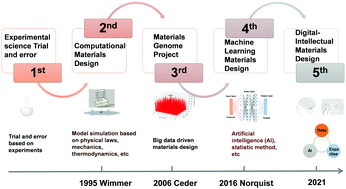
Phys. Chem. Chem. Phys., 2021,23, 22835-22853
https://doi.org/10.1039/D1CP03456A
Can the microscopic and macroscopic transport phenomena in deep eutectic solvents be reconciled?
A thorough understanding of the structural relaxation associated to the H-bond dynamics in DESs will provide the necessary framework to interpret the emergence of bulk transport properties from their microscopic counterparts.

Phys. Chem. Chem. Phys., 2021,23, 22854-22873
https://doi.org/10.1039/D1CP02413B
Computational investigations of selected enzymes from two iron and α-ketoglutarate-dependent families
AlkB and TET are two members of the Fe and α-ketoglutarate dependent superfamily of enzymes. This perspective provides an overview of computational investigations that have been carried out to study selected members of these two families.

Phys. Chem. Chem. Phys., 2021,23, 22227-22240
https://doi.org/10.1039/D1CP03800A
Solubilities in aqueous nitrate solutions that appear to reverse the law of mass action
Non-ideal aqueous electrolyte solutions have been studied since the start of the application of thermodynamics to chemistry in the late 19th century.
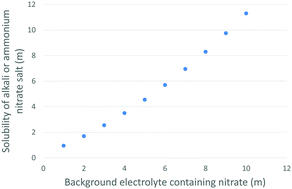
Phys. Chem. Chem. Phys., 2021,23, 21407-21418
https://doi.org/10.1039/D1CP03124D
High-performance lithium–sulfur batteries enabled by regulating Li2S deposition
This perspective highlights the significance of regulating Li2S deposition and the related methods in improving the performance of lithium–sulfur batteries.
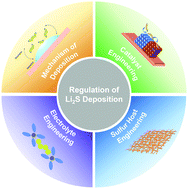
Phys. Chem. Chem. Phys., 2021,23, 21385-21398
https://doi.org/10.1039/D1CP03030B
Understanding the molecular mechanisms of transcriptional bursting
Microscopic origins of transcriptional bursting phenomena are discussed from the physical–chemical point of view.
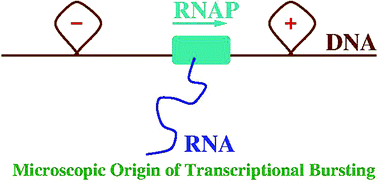
Phys. Chem. Chem. Phys., 2021,23, 21399-21406
https://doi.org/10.1039/D1CP03665C
Solvate electrolytes for Li and Na batteries: structures, transport properties, and electrochemistry
Activity of the solvent is negligible in molten solvate electrolytes; this is the main origin of their peculiar characteristics, such as high thermal stability, wide electrochemical window, and unique ion transport.
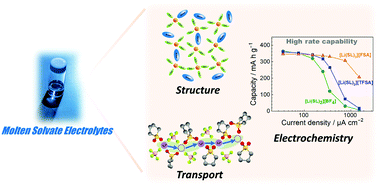
Phys. Chem. Chem. Phys., 2021,23, 21419-21436
https://doi.org/10.1039/D1CP02946K
First-principles materials simulation and design for alkali and alkaline metal ion batteries accelerated by machine learning
This Perspective is intended to reveal and envisage how the introduction of machine learning techniques accelerates first-principle materials simulation and design for alkali and alkaline metal-ion batteries.
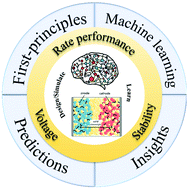
Phys. Chem. Chem. Phys., 2021,23, 21470-21483
https://doi.org/10.1039/D1CP02963K
A quantitative multiscale perspective on primary olefin formation from methanol
Our quantitative multi-scale perspective on the formation of the first C–C bond decouples the adsorption, desorption, reaction, and mobility of species and provides new insights that could guide rational catalyst design.
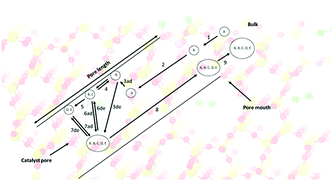
Phys. Chem. Chem. Phys., 2021,23, 21437-21469
https://doi.org/10.1039/D1CP02551A
2D ferroelectric devices: working principles and research progress
Due to their unique reversible polarization, 2D ferroelectrics are promising for nanodevice applications in ferroelectric field effect transistors, diodes and tunnel junctions.
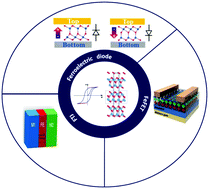
Phys. Chem. Chem. Phys., 2021,23, 21376-21384
https://doi.org/10.1039/D1CP02788C
Structures, plasmon-enhanced luminescence, and applications of heterostructure phosphors
The structures, plasmon-enhanced luminescence and mechanism of metal/fluorophore heterostructure composites, such as core–shell nanocrystals, multilayers, adhesion, islands, arrays, and composite optical glass, are reviewed in detail.
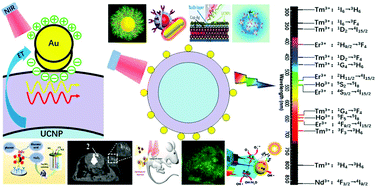
Phys. Chem. Chem. Phys., 2021,23, 20765-20794
https://doi.org/10.1039/D1CP01860D
Opportunities and challenges in microwave absorption of nickel–carbon composites
The research progress of metal magnetic Ni absorbing materials, a variety of carbon-based absorbing materials, and Ni–C composites are reviewed. The basic challenges and opportunities are prospected.
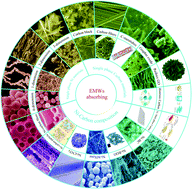
Phys. Chem. Chem. Phys., 2021,23, 20795-20834
https://doi.org/10.1039/D1CP03522C
Single-layer carbon nitride: synthesis, structure, photophysical/photochemical properties, and applications
This Perspective provides a critical summary of the current state of the art in the synthesis and properties of polyheptazine single-layer carbon nitride (SLCN).
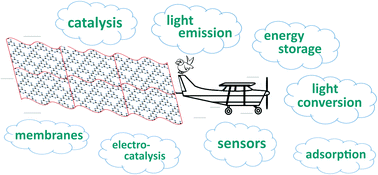
Phys. Chem. Chem. Phys., 2021,23, 20745-20764
https://doi.org/10.1039/D1CP03457J
The necessity of periodic boundary conditions for the accurate calculation of crystalline terahertz spectra
Terahertz vibrational spectroscopy has emerged as a powerful spectroscopic technique, providing valuable information regarding long-range interactions – and associated collective dynamics – occurring in solids.
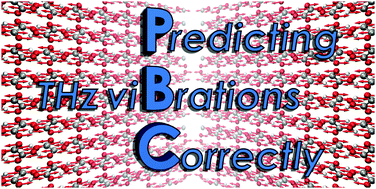
Phys. Chem. Chem. Phys., 2021,23, 20038-20051
https://doi.org/10.1039/D1CP02496E
Breakdown of the Stokes–Einstein relation in supercooled water: the jump-diffusion perspective
The breakdown of the Stokes–Einstein relation in supercooled water can be quantitatively explained using the translational jump-diffusion approach.
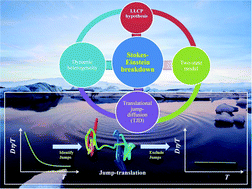
Phys. Chem. Chem. Phys., 2021,23, 19964-19986
https://doi.org/10.1039/D1CP02202D
Yet another perspective on hole interactions
Hole interactions are known by different names depending on their key atom (e.g. halogen, chalcogen, triel or hydrogen bonds), and the geometry of the interaction (σ, π, δ). Maybe we can make some order by analysing their molecular orbitals?
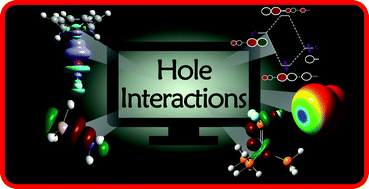
Phys. Chem. Chem. Phys., 2021,23, 19948-19963
https://doi.org/10.1039/D1CP03533A
Building ordered nanoparticle assemblies inspired by atomic epitaxy
This Perspective reviews recent advances in ordered nanoparticle assemblies that are produced on selected substrates, akin to the atomic epitaxy.
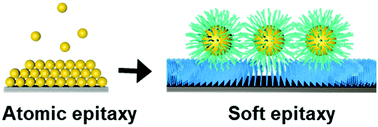
Phys. Chem. Chem. Phys., 2021,23, 20028-20037
https://doi.org/10.1039/D1CP02373J
Molecular modelling of compounds used for corrosion inhibition studies: a review
This perspective review features, among others, the use of DFT, QSAR modeling, artificial neural network (ANN) modeling, molecular dynamics simulations and Monte Carlo simulations in modelling organic corrosion inhibitors. It is a compendium of studies on the subject.
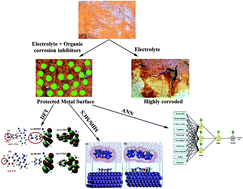
Phys. Chem. Chem. Phys., 2021,23, 19987-20027
https://doi.org/10.1039/D1CP00244A
A perspective on the redox properties of tetrapyrrole macrocycles
Understanding the redox properties of tetrapyrroles requires deep insights into how structural/electronic alterations affect all four frontier molecular orbitals.
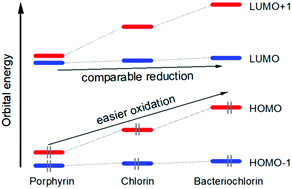
Phys. Chem. Chem. Phys., 2021,23, 19130-19140
https://doi.org/10.1039/D1CP01943K
Single-nanoparticle spectroelectrochemistry studies enabled by localized surface plasmon resonance
Details of electrodeposition and local chemical transformations of single nanostructures can be studied using surface plasmon resonance-enabled darkfield light scattering, photoluminescence, and electrogenerated chemiluminescence.

Phys. Chem. Chem. Phys., 2021,23, 19120-19129
https://doi.org/10.1039/D1CP02801D
Theoretical insights on boron reducing agent for the reduction of carbonyl compounds
We present the computational progress on boron reducing agents affecting the catalytic reductions of carbonyl compounds and discuss their future opportunities.
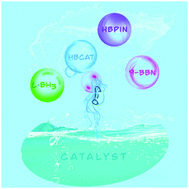
Phys. Chem. Chem. Phys., 2021,23, 19111-19119
https://doi.org/10.1039/D1CP01857D
Kinetics of photon upconversion by triplet–triplet annihilation: a comprehensive tutorial
Kinetics of triplet–triplet annihilation photon upconversion is organized from the basics for non-experts and experts. From self-consistent analyses of the tangled photophysical events, many important and useful relations are derived and summarized.
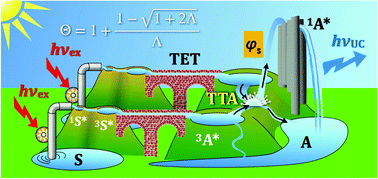
Phys. Chem. Chem. Phys., 2021,23, 18268-18282
https://doi.org/10.1039/D1CP02654B
An overview of hydroxy-based polyanionic cathode insertion materials for metal-ion batteries
Hydroxy-based polyanionic cathode materials are reviewed for (post) Li-ion batteries with a special focus on the hydroxyphosphate, hydroxysulfate and jarosite classes of insertion host materials.
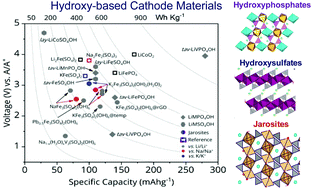
Phys. Chem. Chem. Phys., 2021,23, 18283-18299
https://doi.org/10.1039/D1CP01741A
Progress in phase-sensitive sum frequency generation spectroscopy
Representative methods of surface-selective phase-sensitive sum frequency generation spectroscopy are reviewed in terms of interferometer implementation for optical heterodyne detection.
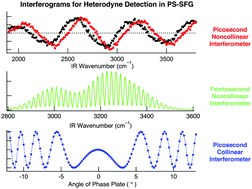
Phys. Chem. Chem. Phys., 2021,23, 18253-18267
https://doi.org/10.1039/D1CP01994E
Integration of theory, simulation, artificial intelligence and virtual reality: a four-pillar approach for reconciling accuracy and interpretability in computational spectroscopy
A general “four-pillar strategy” (theory, simulation, machine learning and augemented reality/virtual reality) to integrate computational and experimental spectroscopy.
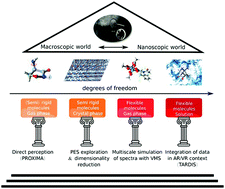
Phys. Chem. Chem. Phys., 2021,23, 17079-17096
https://doi.org/10.1039/D1CP02507D
Modern multireference methods and their application in transition metal chemistry
Modern multireference methods open up the possibility to treat complicated transition metal systems on a physically sound basis.
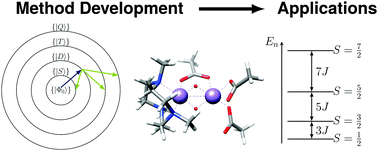
Phys. Chem. Chem. Phys., 2021,23, 17097-17112
https://doi.org/10.1039/D1CP02640B
Thermal and photo stability of all inorganic lead halide perovskite nanocrystals
We shed light on the thermal and photo stability of all inorganic lead halide perovskite nanocrystals from the perspective of surface ligands and structure composition in order to promote their application from the laboratory to the market.
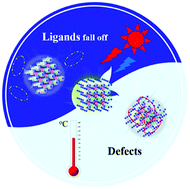
Phys. Chem. Chem. Phys., 2021,23, 17113-17128
https://doi.org/10.1039/D1CP02119B
Label-free methods for optical in vitro characterization of protein–protein interactions
Protein–protein interactions are involved in the regulation and function of the majority of cellular processes.
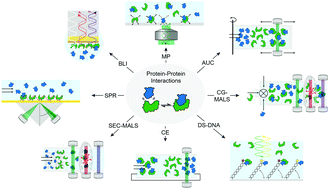
Phys. Chem. Chem. Phys., 2021,23, 16488-16500
https://doi.org/10.1039/D1CP01072G
The π-hole revisited
Two views of the computed electrostatic potential on the 0.001 au surface of 2,4,6-trifluoro-1,3,5-triazine. Red is the most positive color range, while blue is the most negative.
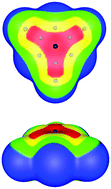
Phys. Chem. Chem. Phys., 2021,23, 16458-16468
https://doi.org/10.1039/D1CP02602J
Environment-friendly Cu-based thin film solar cells: materials, devices and charge carrier dynamics
The materials, devices and charge carrier dynamics of Cu-based thin-film solar cells are comprehensively reviewed to promote the understanding of photovoltaic design.
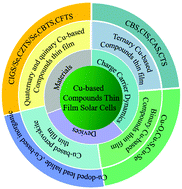
Phys. Chem. Chem. Phys., 2021,23, 16469-16487
https://doi.org/10.1039/D1CP02067F
About this collection
Welcome to our online collection of PCCP Perspective articles. Here we feature PCCP Perspective articles published in 2021.
Perspectives are high profile articles that present an authoritative state-of-the-art account of the selected research field. PCCP Perspectives take a wide variety of forms including personal accounts of research, critical analyses of topics of current interest and essential introductions to a field.
Congratulations to all the authors whose articles are featured and we hope readers enjoy this collection.